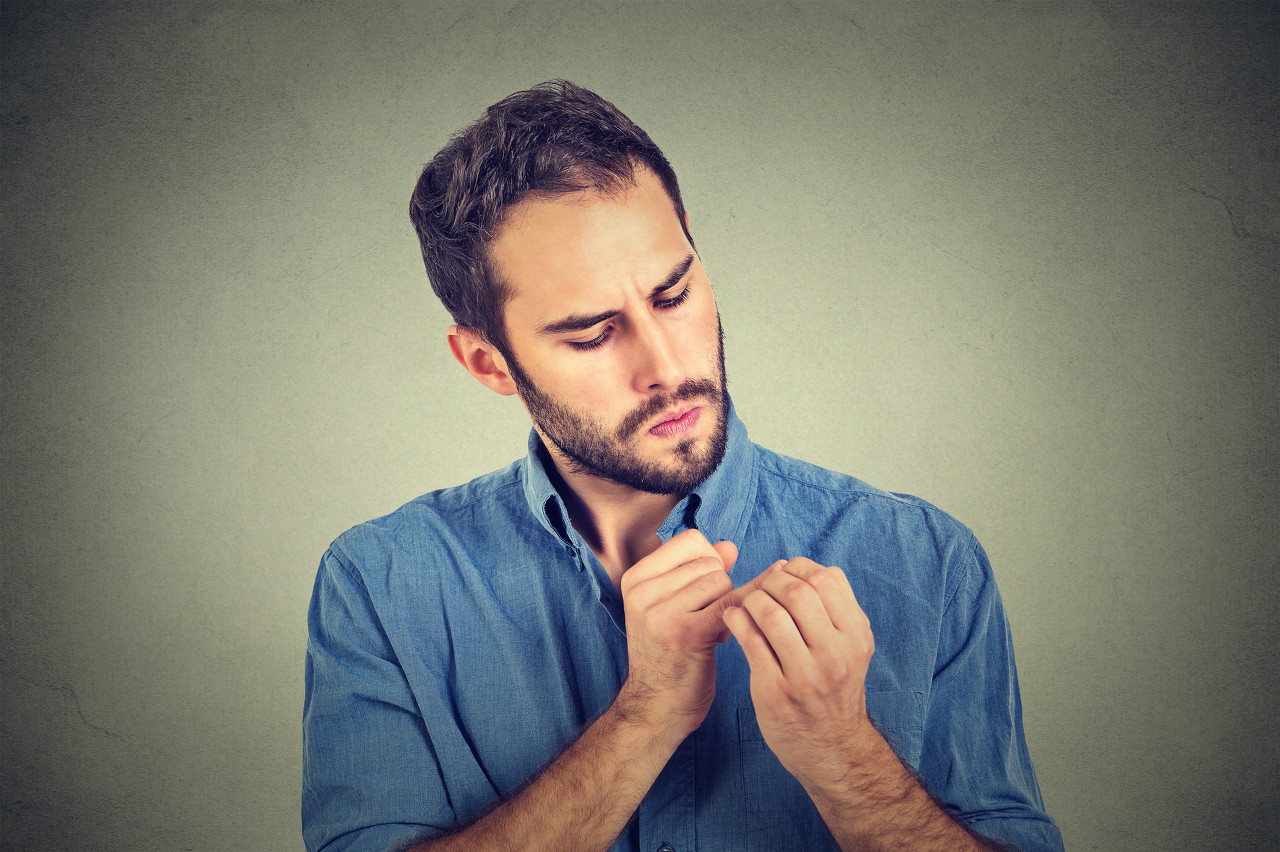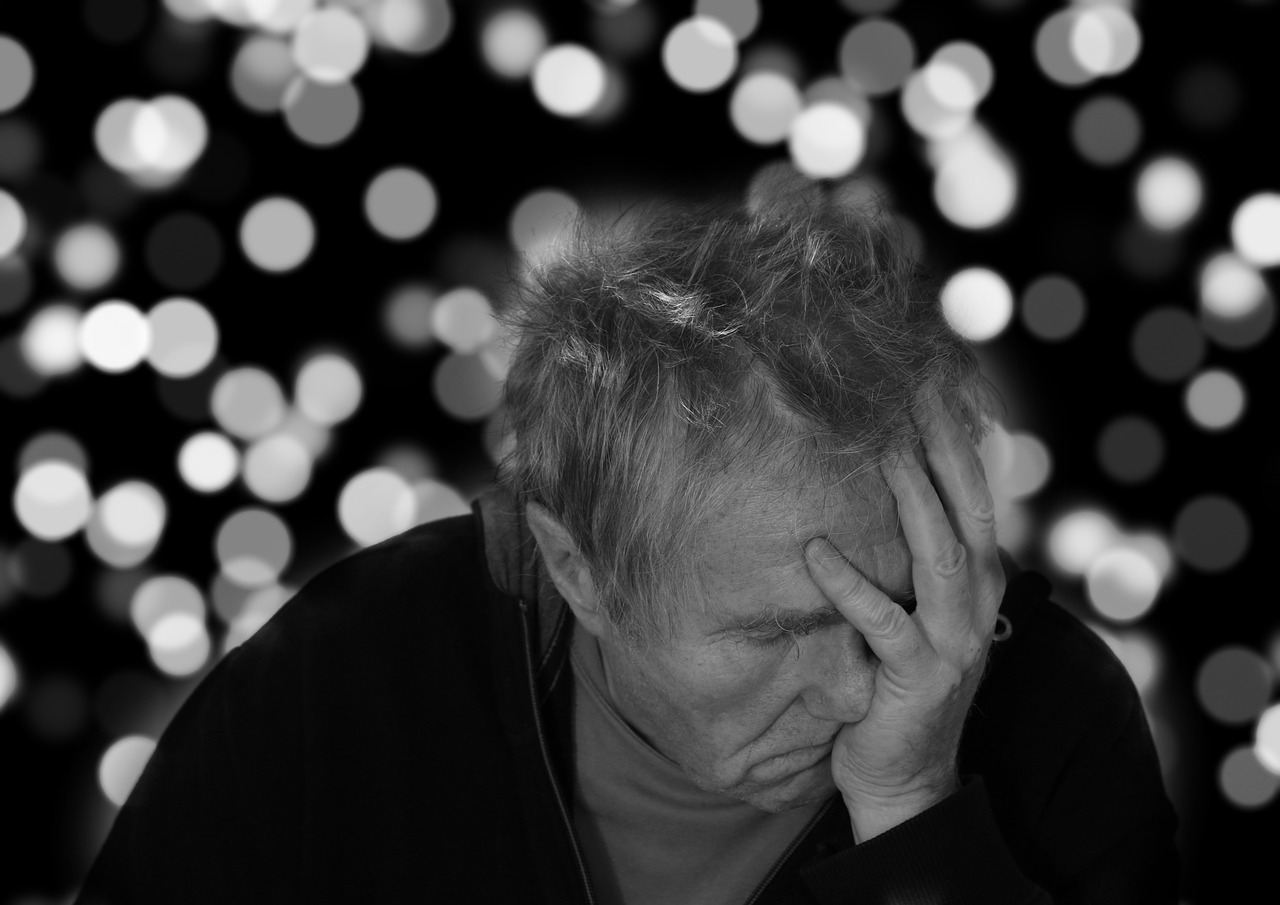Whether in the office or in the classroom, there are always some strange idiosyncrasies of coworkers or classmates that are tiresome: shaking your legs, biting your nails, playing with the pen in your hand, constantly fiddling with your hair …… Even, we ourselves often have such habits.
Even when alone, we may need to give up these habits. But how do these habits come about?
We spoke to a number of experts to explore some possible ways to kick these habits.
Flint Espil.
Clinical Assistant Professor of Psychiatry and Behavioral Sciences at Stanford University, studies the etiology and treatment of Tourette’s Disorder, Obsessive-Compulsive Disorder, and body-centered repetitive behaviors
Shaking your legs and stomping your feet, biting your nails, and ruffling your hair are what we call body-focused repetitive behaviors (BFRVs). There’s a limit here, of course: for some people, these behaviors aren’t worth taking seriously, but for others, they can cause serious distress in their lives.
If these behaviors become a life-affecting problem, many people have found a proven standard method for controlling them. This method stems from a study that began in the early 1970s and continued for nearly 50 years – a behavioral therapy called habit reversal training, which is broken down into three steps.
The first step is to identify when and where these behaviors occur.
I encourage people to make a note: when they find themselves (or someone else finds out) that these behaviors are occurring, they can make a note of where they were, what they were doing or thinking about, and any other factors associated with it. They should also note any other behaviors in the chain of underlying behaviors that led to the problem (e.g., checking or rubbing fingernails, running their hands through their hair, searching or rubbing their skin for “blemishes”, etc.).
This provides some insight into the behavior and often raises awareness of the behavior itself. Perhaps they are stressed because of an important exam the next day or a big challenge at work, and ruffling their hair is a way to release the stress. Or maybe they are more likely to engage in these behaviors before bed or when they are bored.
Once the time and place of occurrence is known, these variables can be changed to reduce the likelihood of these behaviors. If these behaviors relieve stress, I encourage people to seek other practices to release stress, such as meditation, relaxation breathing, exercise, or other helpful methods. If these behaviors relieve boredom or irritability, people can keep their hands busy by placing objects in their immediate environment, or they may need to take a break in a different way to prevent stress from being sedentary.
The second part of habit reversal training is to create a competing behavior – competing behaviors that interfere with people ruffling their hair, biting their nails, or shaking their legs. For fiddling with hair, a common competitive behavior is for people to clasp their arms to their chest or clasp their fingers together as soon as they realize their hands are ready to fiddle with their hair again. We usually tell people to hold this competitive behavior for a minute or so, or until the urge to engage in the problematic behavior subsides.
The third part of habit reversal training is social support. People need help from family members or others who will cue the use of alternative behaviors if they notice repetitive body-centered behaviors. This is especially useful for people who don’t understand when and where problematic habits occur. If you decide to perform this, be sure to have an agreed-upon cueing method to minimize unnecessary arguments.
Carol Mathews.
Professor and Vice Chair for Strategic Development, Department of Psychiatry, Director, Center for Obsessive-Compulsive, Anxiety and Related Disorders, University of Florida
Habits are active movements, but they are done semi-consciously. We don’t say, “I’m going to bite my nails today,” we do it automatically. At the same time, these behaviors are under people’s control. So the first thing to do is to make people fully aware of these behaviors.
It’s easy to say, as if once people are fully aware of their bad habits, they can “stop”. However, it is very difficult to do. Often, such habits are difficult to break. In such cases, it is necessary to create a barrier. If there is a habit of biting nails, you can put bad-tasting nail polish or vinegar on the nails, or if there is a habit of stomping on the feet, you can put some nails on the soles of the shoes. Taste and sound help to turn this habit into a fully conscious behavior.
The next step is to consciously focus on replacing these behaviors for a limited time. If people find themselves biting their nails in certain specific situations (such as watching a movie), they can consciously do other things in those situations. I tell my patients who have nail biting problems to learn to knit because they can do this while watching TV. If people’s problem is stomping and shaking their legs, try crossing their legs so they don’t keep stomping and shaking their legs.
If you are in a situation where you can’t sit with your legs crossed or can’t knit, then there are more techniques. If you are in a meeting, try holding your feet firmly on the floor for 60 seconds; or you can sit on your hands; or pick up a notepad. You can also consciously say, Okay, I’m not going to bite my nails or stamp my feet and shake my legs for the next 60 seconds, and then allow your arms and legs to move again. Sometimes 60 seconds is enough and you won’t engage in these behaviors again; you’ll be busy doing other things.
These habits are distinctly different from tics because people can control the habits. Teaching people with tic disorders to suppress tics is a positive behavior: we can use similar methods to deal with these behaviors, but tics are a bit like sneezing; people may know a sneeze is coming, but people may not be able to stop it. There are techniques we can learn to recognize when a tic is coming and support or modify it, but this is involuntary behavior.
Katharine Phillips.
Professor of Psychiatry, Weill Cornell Medical College, New York
Leg shaking and foot stomping, nail biting and hair ruffling and other similar behaviors are sometimes called body-centered repetitive behaviors. Many of these behaviors are simple habits, and these habits are usually not problematic or in need of treatment. However, when they are recurrent, difficult to stop and cause serious distress or dysfunction, they rise to the level of a mental health disorder.
In such cases, I recommend treatment by a professional, which can be very helpful. In the Diagnostic Manual for the field (DSM-5), the following two problematic types of repetitive behaviors directed at the body are categorized as separate mental health conditions: trichotillomania (hair-pulling disorder) and excoriation (skin-picking disorder). In some cases, these disorders are serious; for example, they can lead to significant hair loss or serious skin infections.
Often, the dominant treatment for such problems is a method called habit reversal training. This treatment usually involves awareness training (through daily self-monitoring and recognition of triggers for undesirable behavior), stimulus control (modifying or avoiding triggers), and a “competitive response” (doing something else with your hands, such as cupping a ball or clenching a fist). Some physical therapists add elements such as relaxation training or therapy to help patients better deal with difficult emotions. Habit reversal training can also be used for less problematic body-centered repetitive behaviors, such as those that are annoying.
For more difficult to control behaviors, the natural supplement NAC (N-acetylcysteine) can reduce hair pulling, skin picking and similar body-specific repetitive behaviors. The dosage of NAC can be started at 600 mg per day and gradually increased to 1,200 mg twice a day or even 1,800 mg twice a day if needed.Patients should consult with their doctor on dosage regimens and get advice on dosage. If the patient’s symptoms cause severe distress or dysfunction, serotonin reuptake inhibitor (SRI) medications such as fluoxetine (Prozac), sertraline (Zoloft), or etanercept (Lexapro) may also be tried.
These are widely prescribed medications that can be effective in addressing repetitive, body-centered behaviors that cause serious distress. If you have other symptoms or disorders that may be improved by an SRI (e.g., depression, obsessive-compulsive disorder, or body dysmorphic disorder), the option of trying an SRI medication will be more appealing. Another class of medications called atypical antipsychotics (but which can actually be effective in treating a very wide range of symptoms) may also be helpful, but usually these medications are used against more severe repetitive behaviors. As with all medications or supplements, the prescribing clinician should carefully weigh the pros and cons of each option for each patient.
Antonia Caretto
Clinical psychologist with extensive experience treating clinical children, adolescents, and adults with OCD
Although people may think of leg shaking and foot stomping, nail biting, and hair ruffling as “natural habits that come naturally when you’re stressed,” the causes and solutions to these habits may be different. Each of these behaviors can be exacerbated by stress, so good stress management skills are the first logical intervention to consider. Stress management includes yoga and relaxation, breathing exercises, and positive thinking, but can also include positive social interactions, adequate sleep, a healthy diet, and regular exercise.
Habitual leg shaking movements can be caused by anxiety, but in some cases it can be a side effect of medication or caused by a neurological condition such as neurological syndrome of the legs or dementia. A psychologist will be able to help you determine when you are shaking your legs and suggest possible treatment options to stop the habit.
Hair ruffling is often the behavior of those who suffer from hair-pulling fetishism, for which treatment is very specific. For those who already suffer from this disorder, one can try to find something else to keep the hands away from the hair, or even temporarily use an obstacle (baseball cap) to make the habit more conscious and easier to break.
Nail biting is considered a repetitive behavior directed at the body and is usually driven by perfectionism. If this is the case, the patient believes that the nails do not look or feel perfect, and nail biting is an effort to fix the flaw. Cognitive-behavioral therapy that addresses thinking errors and compulsions is necessary to address nail biting.
Each of these observable behaviors may also be a symptom of motor tics (tics). Genetic predisposition or susceptibility is often found in people with tics (tics) (people who also have tics in their family). People with tics often feel an urge or sensation before a tic, but it can be relieved by learning competing behaviors.
For each behavior, raising awareness of it is the first step, and finding other alternative behaviors is a reasonable attempt. Avoiding the environment that triggers these behaviors can be helpful, so more relaxation is highly recommended. A self-reflective cost-benefit analysis of the behavior can help with change. Setting small, reasonable and achievable goals is essential to any behavior change program, and support from others can also help.
Seeking the help of a mental health professional with a strong background in applied behavior analysis and cognitive behavioral therapy can also help the patient solve problems.
Sara O’Brien.
Associate Professor of Psychology at Knox College, whose primary research interests include assessment, classification, and diagnosis of mood and anxiety disorders
Research has shown that rewarding yourself for a behavior increases the likelihood that the behavior will occur again. Set a small goal that you can reward yourself for each time you break a habit – if you love M&Ms like I do, maybe you can set it so that if you don’t fiddle with your hair during a meeting, you reward yourself with a handful of M&Ms. as time passes, you’ll be less likely to fiddle with your hair.
It’s also important to note that while these types of habits are very common and usually harmless, there are some severe forms that can lead to serious physical, psychological and social consequences. For example, both hair pulling and skin tearing are clinical disorders that should be treated by professionals with relevant experience, and many effective treatments based on the principles outlined above are already available.
Finally, what triggers these behaviors in the first place? Internal thoughts or emotions (e.g., anxiety, excitement, anger, boredom) and/or external circumstances (e.g., specific people, places, or situations) can make these behaviors worse. Self-monitoring can help people determine what the triggers are so that they can address them. If you find that you are ruffling your hair during a meeting due to the stress of the meeting, it may be more important to not only cut down on the ruffling, but to address what is causing the stress.
Margo Thienemann
Clinical Professor of Psychiatry and Behavioral Sciences, Stanford University
You may keep shaking your legs due to anxiety or impatience; but for some people who have trouble concentrating, this may be a helpful way to eliminate other distractions. This behavior may annoy others enough, though, that they have to stop shaking their legs. But the very thing of leg shaking may inspire sufficient and effective motivation. If you’re using leg shaking to help you concentrate and you’re not disturbing anyone, then maybe you don’t have to stop.
If you’re shaking your legs when you’re anxious or impatient, try to think about why and whether these behaviors are what you need – what’s going to happen after you shake your legs? How important is it? How time sensitive is it? What is in your control? Is it outside your control? What are the possible outcomes? Once you’ve taken it under scrutiny, you can shake a leg by practicing positive thinking meditation, or by distracting yourself from what’s bothering you.
Biting your nails is similar. It’s not a good idea by any stretch of the imagination: it’s socially unacceptable, it’s not an effective beauty regimen, it can be damaging to nails and cuticles, and it puts a person at increased risk of disease (especially now, with the new coronavirus epidemic). If it’s a habit, work on breaking it. Treatment guidelines, resources, and support for nail biting bites and some other recurring body-centered disorders are available at the Trichotillomania Learning Center / TLC Foundation for Body- Focused Disorders).
I think fidgeting with your hair can be viewed as a similar behavior to leg shaking and may annoy those around you. If this is a habit that causes hair to break or fall out, then I would recommend that people with this behavior seek help from one of the above organizations.
Tics are common, usually brief, and usually occur in school-age children, more commonly in boys. If it persists for more than a month, then it is important to seek a medical professional for an evaluation and to determine what other conditions the tics may be causing, such as Attention Deficit and Hyperactivity Disorder (ADHD), Obsessive Compulsive Disorder (OCD), or dyslexia.
If tics come on suddenly in children with other severe emotional symptoms, sleep difficulties, bedwetting, or frequent urination, they may be Pediatric Autoimmune Neuropsychiatric Disorders Associated with Streptococcal Infections (PANI). Streptococcal Infections). If this occurs, it is important to seek diagnostic evaluation by a healthcare professional to discover the cause of the infection and treat it aggressively.




